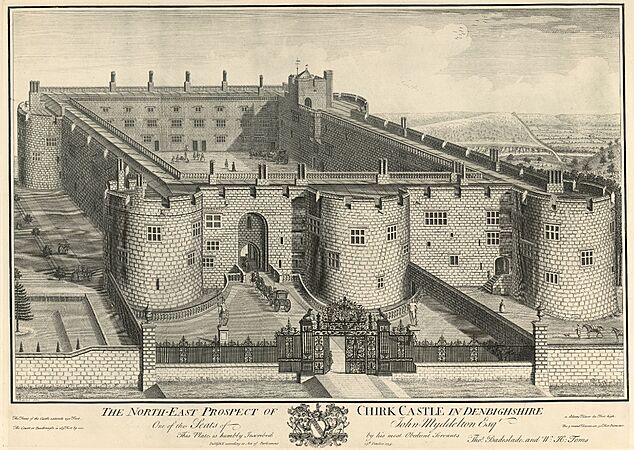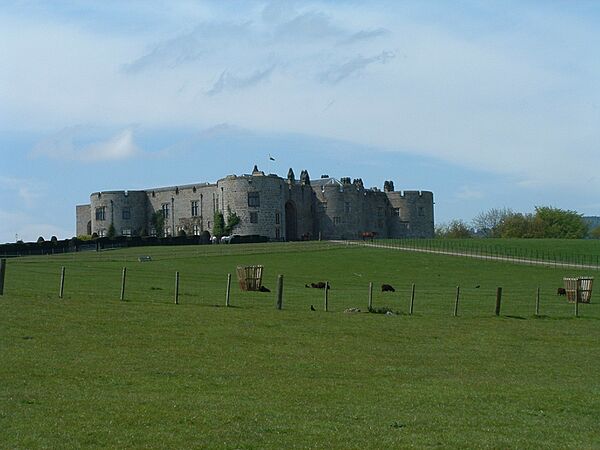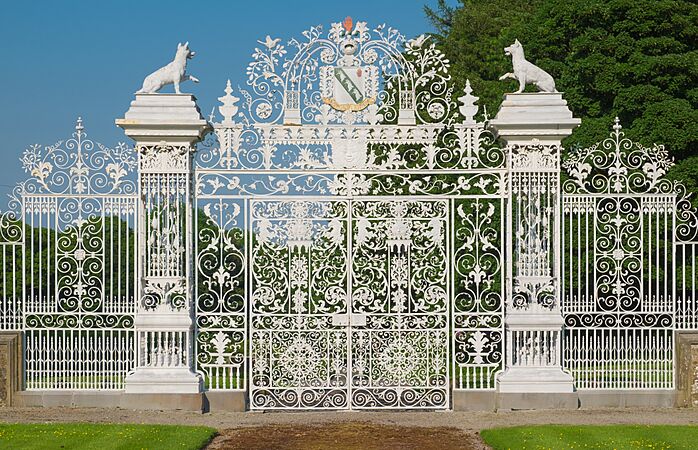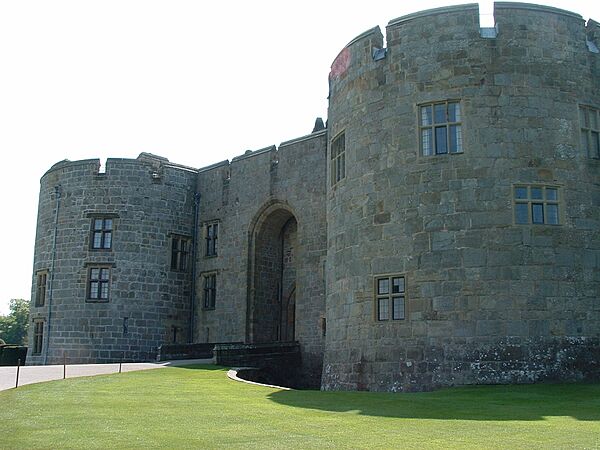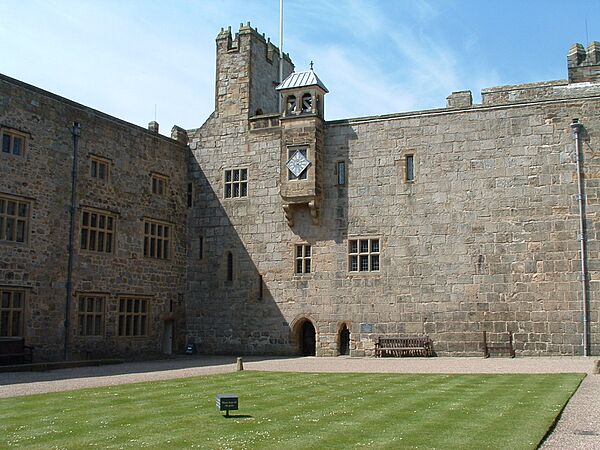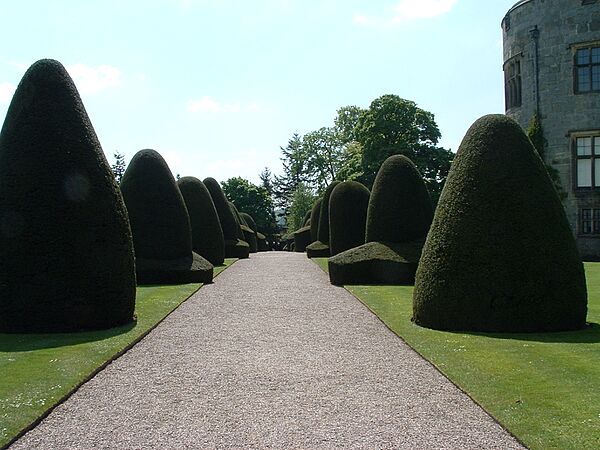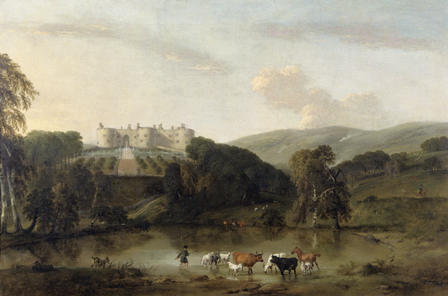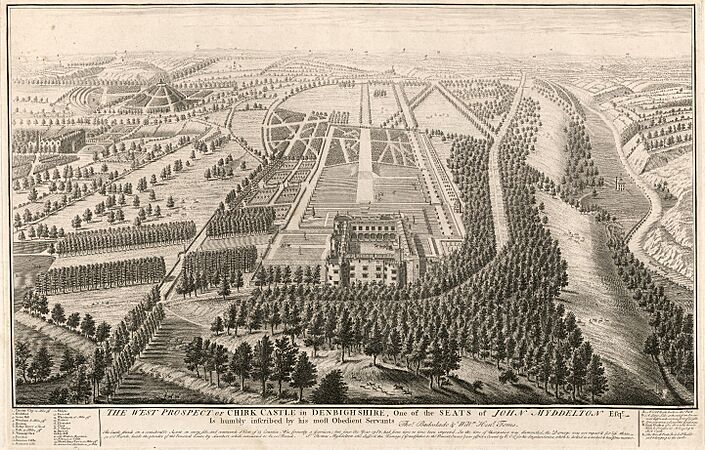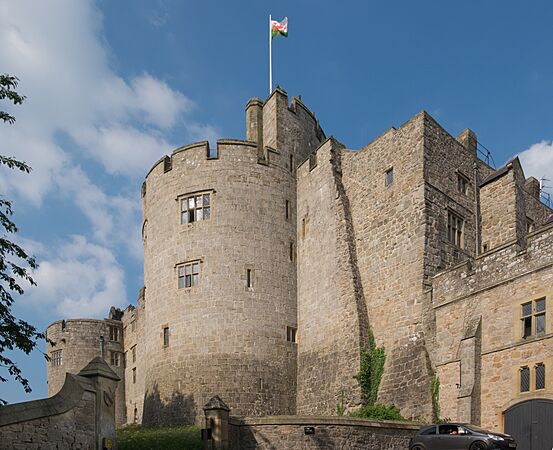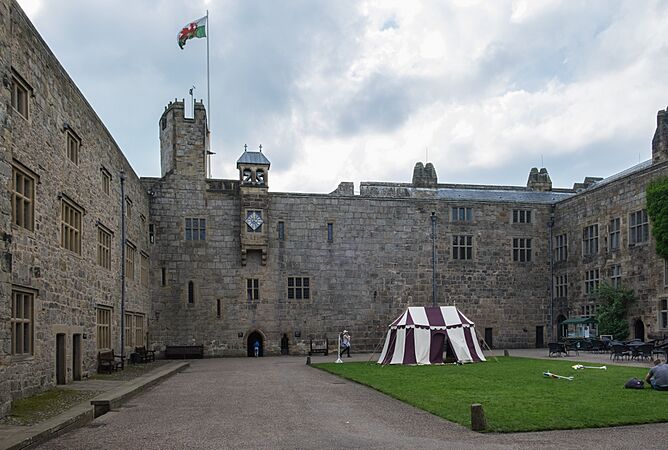Chirk Castle facts for kids
Quick facts for kids Chirk Castle |
|
|---|---|
|
Castell y Waun
|
|
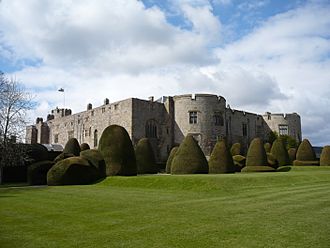
Chirk Castle
|
|
| General information | |
| Type | Castle / Stately home |
| Location | Chirk, Wrexham County Borough |
| Coordinates | 52°56′06″N 3°05′23″W / 52.93500°N 3.08972°W |
| Completed | 1295 |
| Owner | National Trust |
|
Listed Building – Grade I
|
|
| Designated: | 20 October 1952 |
| Reference #: | 598 |
Chirk Castle (Welsh: Castell y Waun in Welsh) is a really old and important castle in Chirk, Wrexham County Borough, Wales. It's about 1.5 miles from Chirk railway station. Today, the National Trust looks after it, and you can visit it! It's a special building because it's listed as a Grade I historic site.
Contents
History of Chirk Castle
How Chirk Castle Was Built
Chirk Castle was built in 1295. Roger Mortimer de Chirk started building it. He was the uncle of Roger Mortimer, 1st Earl of March. This castle was part of a group of strongholds. King Edward I had these built across northern Wales. Chirk Castle helped guard the entrance to the Ceiriog Valley. It was also the main office for the Marcher Lordship of Chirkland.
The Myddelton Family and the Castle
In 1593, Sir Thomas Myddelton bought the castle. He paid £5,000 for it. His son, Thomas Myddelton of Chirk Castle, was involved in the English Civil War. At first, he supported the Parliament. But later, he switched sides to support the King during the 'Cheshire rising' in 1659.
During the 16th and 17th centuries, new windows were added to the castle. These windows had special stone bars called mullions and transoms. The castle was partly destroyed during the English Civil War. But it was later rebuilt. After the war, Thomas Myddelton's son became Sir Thomas Myddelton, 1st Baronet of Chirke. The castle stayed in the Myddelton family for many years.
Charlotte Myddelton inherited the castle in 1796. She married Robert Biddulph. He changed his name to Robert Myddelton-Biddulph. The castle then passed down through the Myddelton-Biddulph family.
Later Years and the National Trust
Before and after World War II, a man named Thomas Scott-Ellis, 8th Baron Howard de Walden leased the castle. He loved art and Welsh culture. In 1918, Chirk Castle was used to film Victory and Peace. During the later part of World War II, the baron even opened parts of the castle to people who had to leave their homes for safety.
The Myddelton family lived at Chirk Castle again until 2004. Lieutenant-Colonel Ririd Myddleton was a special helper to Queen Elizabeth II from 1952 until 1988.
Chirk Castle stayed with the Myddelton family until 1981. Then, it was given to the National Trust. Now, the castle and its beautiful gardens are open for everyone to visit and enjoy.
Exploring the Castle Gardens and Park
Beautiful Gardens and Parkland
Chirk Castle is famous for its amazing gardens. You can see neatly trimmed yew hedges, colorful flower beds, rock gardens, and terraces. The castle is surrounded by a large park that was created in the 1700s.
This parkland started as a place for deer in the 1300s. By the early 1600s, there were formal gardens and kitchen gardens right next to the castle. The gardens kept growing after the English Civil War. An outer courtyard was built to the north. It had stone walls and a fancy wrought-iron gate.
By 1719, the courtyard was covered in grass. The old gates were replaced by magnificent new ones. These new gates and a large screen were made by Robert and John Davies of Bersham.
Changes to the Landscape
A drawing from 1742 by Thomas Badeslade shows the grand design of the gardens. It had formal gardens to the east and walled kitchen gardens to the north. But most of this design was changed in the 1760s and 1770s. William Emes redesigned the park for Richard Myddelton. He added a ha-ha, which is a hidden ditch that keeps animals out without blocking the view. The beautiful Davies gates were moved to a different entrance. These changes made the park look mostly like it does today.
Offa's Dyke and Other Features
A very old earthwork called Offa's Dyke is a big part of the park. It passes very close to the castle. This ancient ditch and bank were partly covered when a lake was created. In 2018 and 2019, archaeologists dug up a part of Offa's Dyke here. They found important remains of the ditch and bank. The parkland helped keep these old remains safe.
The Oak at the Gate of the Dead is another interesting spot. It's about 300 yards from Chirk Castle. This oak tree marks the place where the Battle of Crogen happened in 1165.
In 2013, Chirk Castle was even used as a special stage for the 2013 Wales Rally GB, a big car race!
The parks and gardens of Chirk Castle are listed as Grade I. This means they are very important historic sites in Wales.
Gallery
See also
- Castles in Great Britain and Ireland
- List of castles in Wales
- List of gardens in Wales
- List of GWR 4073 Class locomotives


